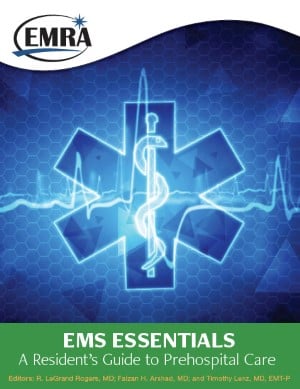Ch 9. Subspecialty: Rural EMS
Providing emergency medical care outside of urban settings presents unique challenges. Agencies charged with this respon- sibility have developed means to meet this goal with limited resources. Two broad categories of non-urban EMS will be re- viewed: rural EMS and wilderness EMS.
Rural EMS: While no specific definition exists for rural EMS, such agencies are faced with challenges regarding personnel staffing, limited medical training, and logistical issues.
Staffing models: Although the names vary, most rural EMS agencies use one of three staffing models.
- Volunteer: All personnel within an agency are perpetually “on-call.” Anyone available to respond does, often in personal vehicles. They are unpaid.
- Home call: A subset of personnel is on call for a given shift. They must remain within a certain distance of the station in the event a call comes in. When a call is paged out, they drive to the station and take the ambulance to the scene.
- In-vehicle call: On-call providers remain with the ambulance for their shift and respond to calls as needed. This is essentially akin to urban EMS models.
Medical Training
- Time: Personnel for rural EMS agencies are almost universally providing this service as a second job or, more frequently,
- as volunteers. As such they cannot dedicate sufficient time to become trained to advanced levels, such as paramedic. Even meeting CME requirements for basic levels can be challenging.
- Number of providers: Rural communities are, by definition, sparsely populated and, as such, do not provide a large pool of potential providers. Many of these agencies are woefully understaffed and cannot respond to multiple calls simultaneously without aid.
- Retention: With time constraints, there typically is high turnover in these agencies. This increases burden on those leading the agency to recruit and train new staff.
- Clinical skills: Rural EMS providers have significantly lower call volumes and therefore have less exposure to critically ill patients. Therefore, their clinical skill proficiency for advanced procedures, such as ACLS and intubations, is in jeopardy unless the agency recognizes this gap and provides sufficient training.
Logistical Considerations
- Prolonged transport time: Some agencies have transport times in excess of 6 hours to reach definitive care. The “golden hour” is generally unachievable in rural EMS. This long patient contact time creates a need for ongoing assessments in addition to the usual “stabilize and transport” mantra.
- Aeromedical intercepts: For critical patients, rendezvousing with a helicopter or airplane to complete timely transport is routine. Typically the ground unit will proceed toward the hospital until intercepted by the air ambulance at a predetermined landing zone.
- Reciprocal aid: With limited personnel and ambulances, mutual aid agreements are often employed in an attempt to provide resources in the event of multiple, simultaneous calls or a disaster.
- Fire department: Because rural agencies are typically volunteer, fire department personnel may not be medically cross-trained like urban firefighters are. This can leave rural EMS providers without medical assistance on scene.
- Medical direction: Rural EMS medical directors may be available on occasion for online medical direction. In some circumstances, the receiving hospital may serve to provide online medical control, but this may not be feasible if the call occurs outside of hospital radio or cellphone reception. The off-line protocols, or clinical guidelines, address the most commonly encountered scenarios.
Wilderness Medicine
This section of medicine is so broad it includes academic soci- eties, numerous large textbooks, and post-residency fellowships. Commonly defined as an environment where definitive care is farther than 1 hour away, many rural response areas could tech- nically be considered wilderness. In this context, we will only consider formal response agencies that an emergency medicine resident may encounter, a brief description of provider levels unique to this field, and the unusual considerations this practice environment creates.
While no specific training is government-mandated for wilder- ness response agencies, many employ training courses that pro- vide medical personnel with skills unique to wilderness settings.
Types of Wilderness EMS Agencies
Search and Rescue (SAR): These are generally law enforcement affiliated, with varying levels of medical competence, from first aid to paramedic. Frequently takes ambulance personnel into the field on medical calls to provide patient care while the SAR team coordinates the technical aspects of rescue.
- Ski Patrol: Skilled at winter rescues. Generally trained to the EMT-B level.
- Park Service: Varying levels of sophistication, with some services having large teams while others have a single ranger. Medical training also varies.
- Police: Often participate in the role of SAR. Most officers have first responder training but varying levels of comfort with treating patients.
Wilderness Provider Levels
- Wilderness First Aid: 1- to 2-day course on the basics of first aid. Unlike urban first aid, emphasis is not solely on “calling 911.”
- Wilderness First Responder: Approximately 80-hour course covering a broad range of medical topics. Such responders can be very skilled if they use their training frequently. Otherwise, training fades quickly.
- Wilderness EMT: Weeklong course offered to EMTs to teach improvisation and how to function outside of an ambulance filled with medical tools.
- Advanced Wilderness Life Support: 3- to 5-day course designed for medical professionals who want to learn how to provide care with limited diagnostic and treatment options. Typically, course consists of doctors, mid-levels, and some nurses.
Special Considerations
- Limited resources: Medical tools limited to what can be carried on one’s back. Extra personnel may take a long time to get to the scene.
- Extended scope of practice: Medical directors will frequently create protocols for providers to act beyond their formal level of training if certain conditions exist. This is helpful when communication and resources are limited.
- Extreme environments: Shelter from elements is often not readily available. Working in these conditions will place rescuers at risk for becoming patients themselves and must be considered prior to exposing personnel.
- Air support: If available, air support can aid in extracting patients and avoiding long carrying of an injured patient. If the patient is not critical, the air ambulance can rendezvous with a ground unit for the remaining portion of the transport, which saves both money and resources.
- Legal: In the absence of well-defined provider roles, the legal implications of wilderness EMS are unclear, and standards of care in wilderness settings have not been well-established. It is safest to assume most EMS laws will apply in wilderness situations, but do not place rescuers or the patient at risk merely to meet a law.
References
- Shade BR, Rothenberg M, et al. Mosby’s EMT-Intermediate Textbook. 2nd ed. Maryland Heights, MO: Mosby; 2002.2. Wilderness Medical Society. http://www. wms.org/.





